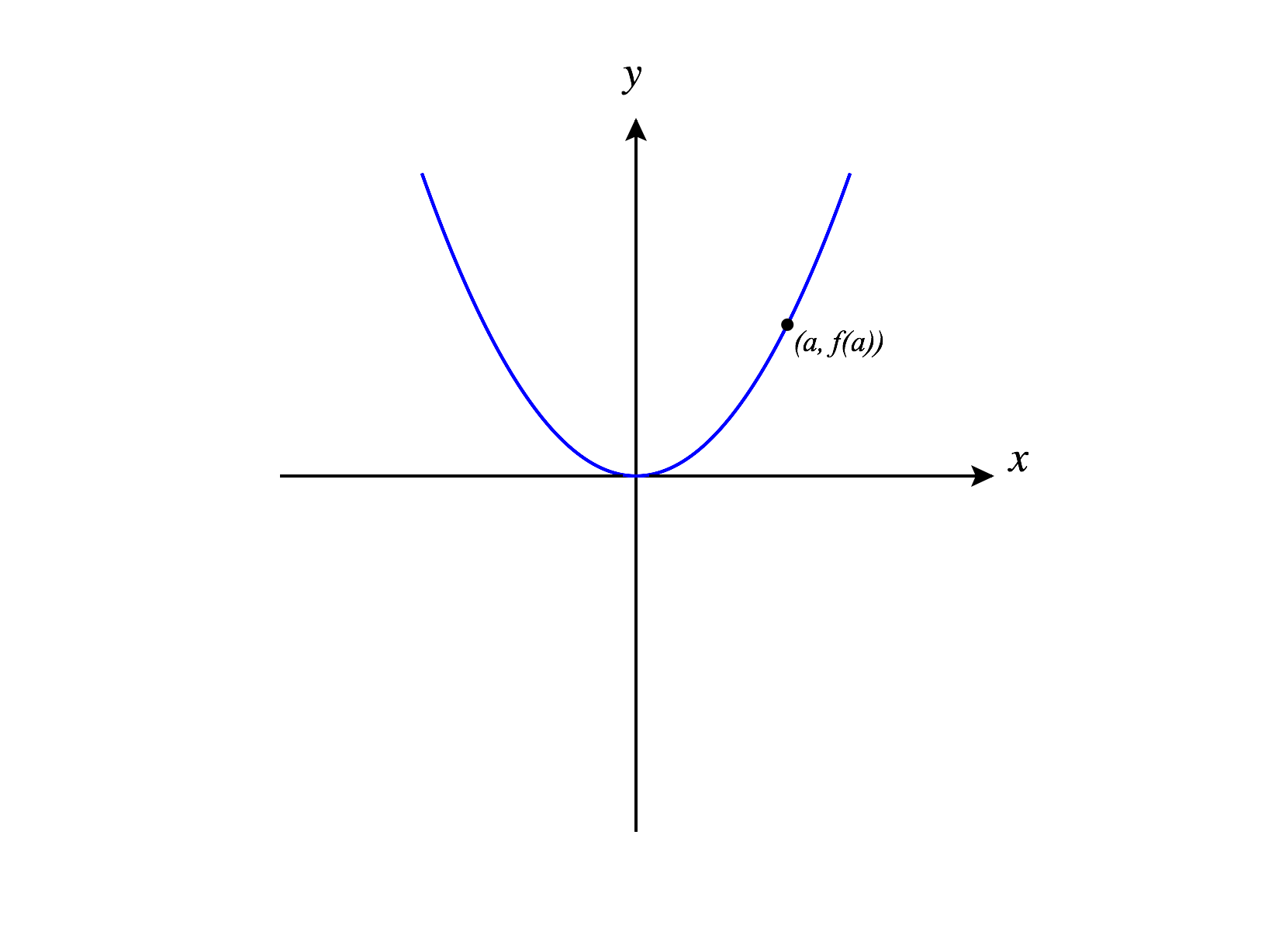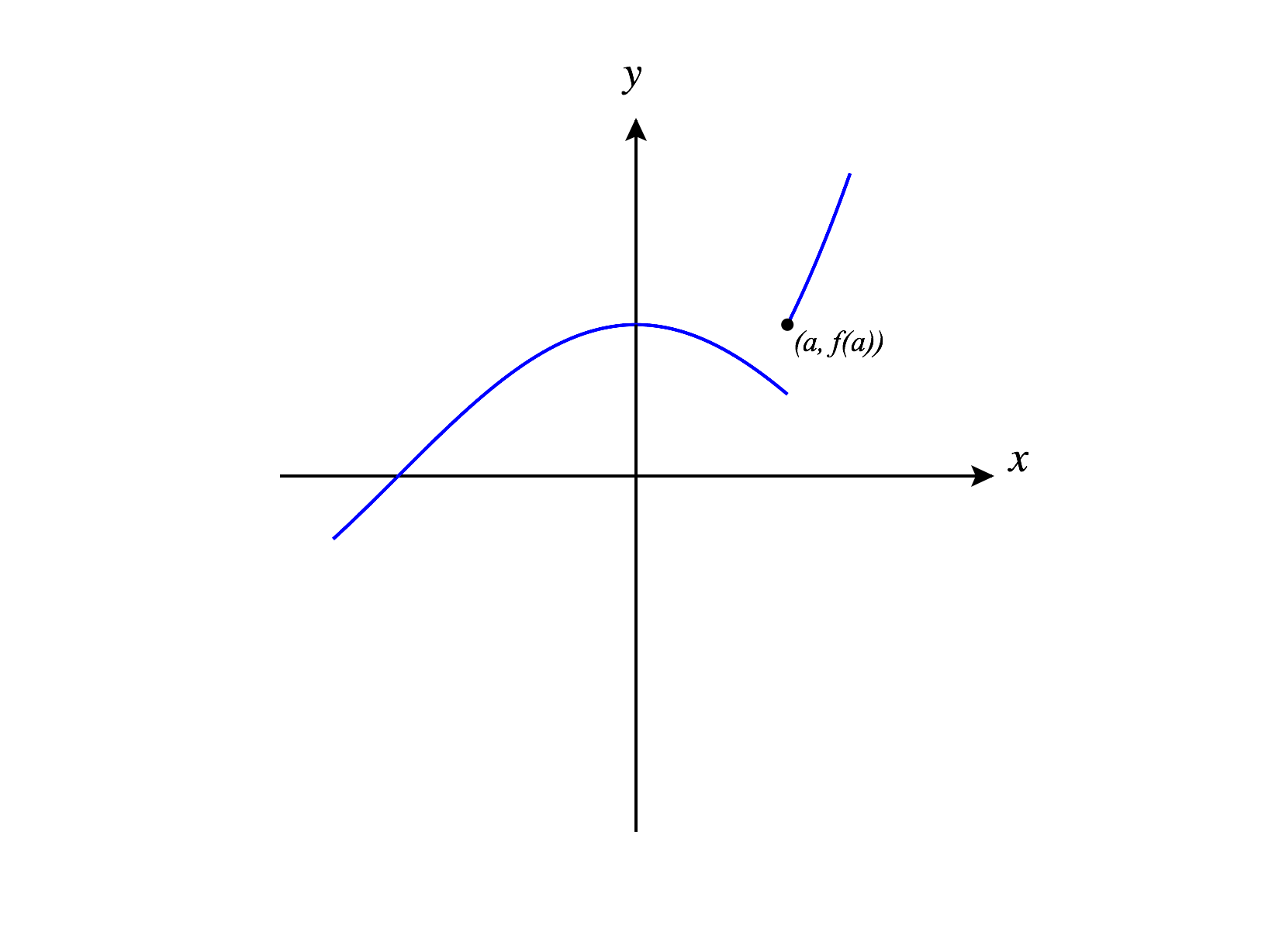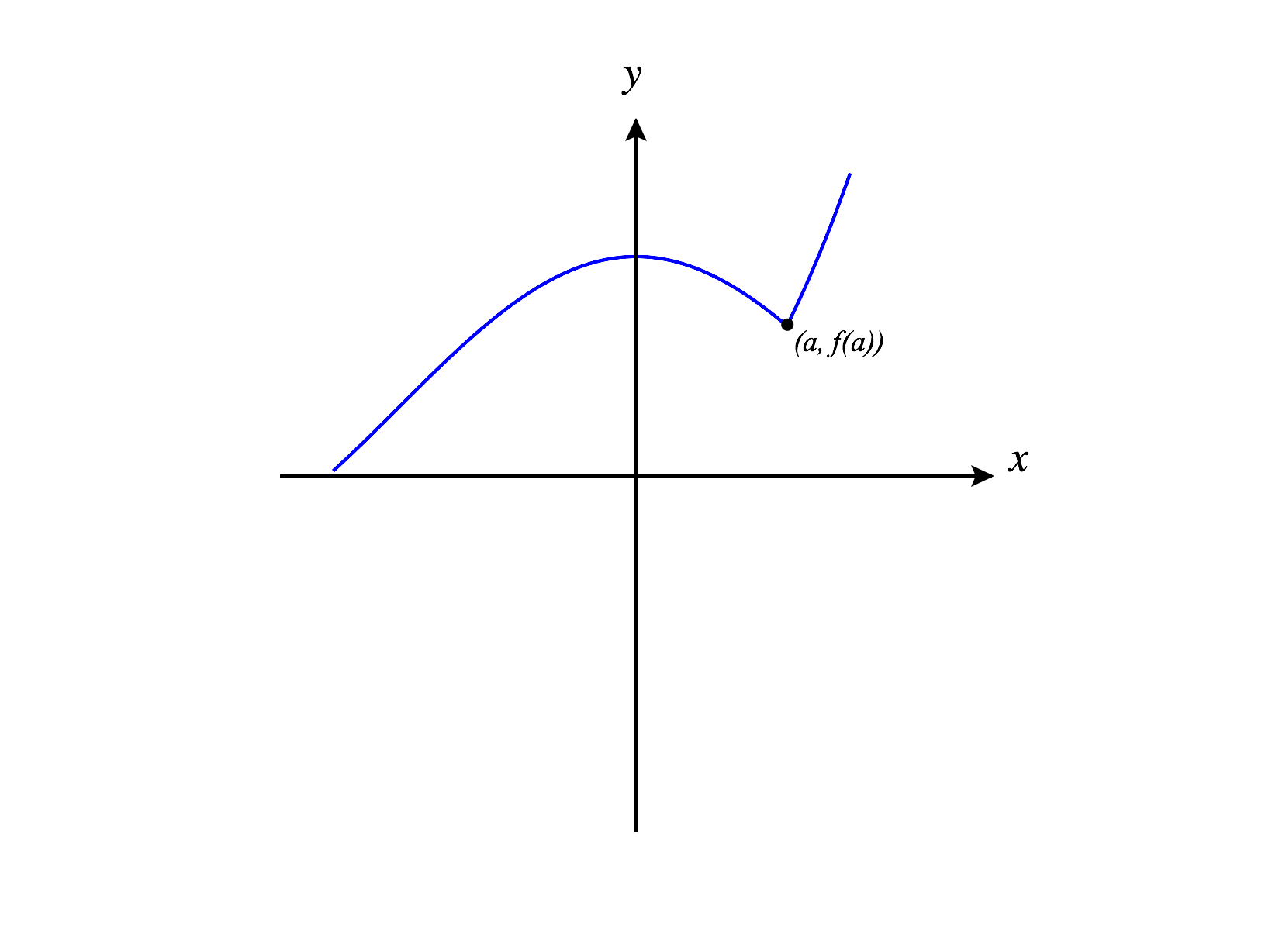


In single variable calculus, derivatives were closely related to the slope of the tangent line to a graph at a point. We used this idea of the slope of the tangent line to define derivatives as a limit of slopes of secant lines,
In the other direction, we were able to use differentiation rules to more easily find the equation for the tangent line to a graph at a point.
We can find the slope of the tangent line by computing . Using differentiation rules, we have Plugging in , we have .
Since the tangent line will have to pass through the point , we compute
So, the tangent line will pass through the point , and will have slope . Writing the equation of the line in point-slope form, we have
When a single variable function is differentiable, we can use the above method to find an equation for the tangent line. In addition, the tangent line provides us with a good linear approximation for the function.
We would like to do something analogous for multivariable functions, but this raises a few questions. What would be the equivalent of the tangent line? What does it mean for a function to be differentiable?
As we begin to explore these questions, we’ll focus on functions , so that we can visualize their graphs.
In single variable calculus, we could get a good sense of whether a function was differentiable by looking at its graph.



If there is a discontinuity or some sort of corner or cusp in the graph at a point, then the function will not be differentiable at that point. Roughly speaking, if we “zoom in” on the graph of a function near a point, and the graph looks very close to a line, then the function will be differentiable at that point.
We’ll extend this idea to make our first, informal definition of differentiability for a function from to .
Although this definition provides us with nice geometric intuition for determining if a function is differentiable, it’s not at all precise or rigorous. Eventually, we’ll need a more formal definition of differentiability, so we’ll return to this concept later.
For now, let’s use this informal definition to investigate differentiability for a couple of functions.
If a function is differentiable, when we zoom in, the graph will look like a plane. Because of this, there will be a plane that’s a good linear approximation for the function near that point. We can use the partial derivatives with respect to and to find an equation for this plane, which we call the tangent plane.
Let’s revisit our previous examples, and see what happens with the tangent plane.
We begin by finding the partial derivatives with respect to and .
At , we have
Finding the value of at , we have Putting all of this together, we obtain an equation for the tangent plane to the graph of at .
To compute the partial derivatives with respect to and , we’ll need to use the limit definition.
We can also find ,
So, we have all of the necessary pieces to find an equation for the (nonexistent) “tangent plane”:
However, we decided that the function wasn’t differentiable at , so the graph does not have a tangent plane at the point.
This example brings up a couple of important points.
For these reasons, differentiability is a much more subtle concept in multivariable calculus than it was in single variable calculus, and our next task will be to find a formal definition for differentiability.